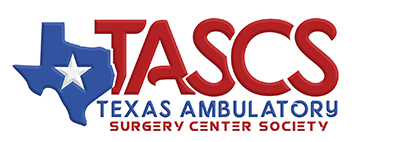A recent virtual event for the Texas ASC community covered explanation of benefit forms, including the components and best practices.
Often referred to as 835, 837, or 5010 files, Explanation of Benefit forms (EOBs) are statements commonly sent to covered individuals and providers from clearing houses. Acuet RCM: Revenue Cycle Management & Consulting representatives – Founder and President Michael Orseno and Revenue Cycle Manager Margo Hagiu – explained each component of EOBs and best practices at a recent Texas Ambulatory Surgery Center Society (TASCS) town hall.
What are the components of an EOB?
Explanation of Benefits forms are composed of the following items: payee, patient information, service performed, date of service, CPT codes, denial codes, service location, billed charges fee, insurance allowable, co-insurance, adjustment reasons and/or codes & remarks, and a brief explanation of adjustment codes. The allowable amount is your contracted amount for the code shown. It is followed by the breakdown of that amount.
Best Practices
Listed below are several best practices to keep in mind when processing EOBs.
-
Always compare the allowed amount on the form to what you have contracted on file.
-
Remark codes or denial codes are what you want to use in your management system to maintain consistency, as they enable you to run a clear denial code report each month to implement improvements.
-
It is good practice for administrators or business operations managers to spot check EOBs on file. They can pull about five or more EOBs to ensure you are being paid according to your contracted rates and that your payments are posting according to the EOBs. The coinsurance and deductible amounts should be billed to the patients.
-
In Medicare, your allowed amount will normally be correct. If you have special contracted rates with your commercial payors, it will be important to pay attention and make sure they are paying the contracted rate.
The Special Case of Blue Cross Blue Shield of Texas EOBs
In Texas, Blue Cross Blue Shield will never give you the correct allowed amount on a statement with multiple CPT codes, multiple procedures, and/or multiple patients. They will not provide the CPT codes on the EOB, so you will have to look at the revenue codes and identify the CPT code. When you look at the allowed amount column, it will normally not be the contracted amount. However, the total allowed amount will be accurate as the total allowed amount for the procedure. Therefore, you must manually determine if the EOB was paid correctly on each line item. If the total EOB is under-paid, it is very difficult to identify which line item, or CPT code, is errored.
Explaining the amount owed to patients will be difficult because Blue Cross Blue Shield does not post the funds correctly line by line, but the amount applied to their co-insurance and deductible is always correct. It will be important to know what the patient’s deductible, remaining amount, and co-insurance is to describe a statement to them.
In the near future, Acuet RCM will return to do another session on EOBs, specifically a deep-dive into denials: examples of forms & codes, how to process, and best practices. Orseno and Hagiu will send ease-of-use tools, such as monthly checklists, best practice summaries, and patient explanation templates. For questions or additional help, e-mail Orseno at [email protected] and/or Hagiu at [email protected].

